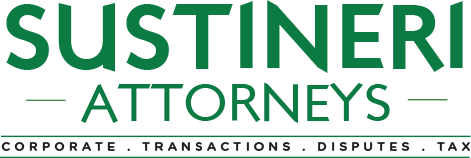Effective office management entails monitoring and maximizing a range of administrative responsibilities, staff, and resources to maintain a productive workspace. For a company to achieve its goals, effective resource allocation, streamlined workflow, transparent communication, and the development of a positive working culture must be high on the agenda. These techniques are essential for long-term success in the complex modern workplace. This article seeks to explore a thorough analysis of simple, yet effective tactics that businesses may use to boost output, create a positive work atmosphere, and encourage teams to reach their best outcomes in 2024.
- Clear Communication Channels: In the workplace, having clear channels of communication means creating effective ways for team members and departments to share ideas, information, and feedback. Creating open lines of communication such as making use of digital channels, holding frequent team meetings, providing clear information, and encouraging an atmosphere in which suggestions and grievances may be openly shared are ways of achieving a great work culture. An open-door policy, for instance, can be put in place to promote an atmosphere in which staff members are at ease to approach supervisors or fellow workers with queries or grievances. Hosting departmental meetings, get-togethers, one-on-one conversations to go over updates, achievements, and difficulties, and use of digital channels such as mail, instant messaging, and video conferencing just to mention a few can foster effective communication in the working environment which in turn, will reduce misunderstandings and promote a collaborative atmosphere for work. Also, ensuring all team members have access to documented copies of crucial policies, processes, and information such as a Human Resource Handbook, and establishing procedures for routinely providing and receiving will help the team to grow and improve. Effective and unambiguous communication is the cornerstone of any prosperous workplace.
- Agile Workspace Design and Ergonomics: This places a strong emphasis on adaptability, flexibility, and teamwork to support a range of work styles and tasks. The physical environment has a significant impact on the work experience. Consider implementing agile workspace designs that accommodate a variety of work styles, from flexible work arrangements such as open areas for teamwork, quiet areas for concentration, and spaces for meetings or group discussions. Ergonomic furniture and adjustable workstations improve employee well-being and comfort by lowering the risk of weariness and increasing overall productivity. An agile workplace fosters innovation, collaboration, and employee well-being. Providing easy access to technology such as charging stations, multiple screen setups, and wireless connectivity supports seamless workflow. Also, to improve mood, reduce stress, and increase productivity, natural elements such as natural light, plants, and outdoor views should be integrated into the workspace, and admonishing team members on the need and respect for each other’s space plays a critical role in ensuring productivity on all angles.
- Time Management and Prioritization Techniques: Time is a limited resource, and understanding its management is critical to productivity. Setting priorities and managing one’s time well is essential for staying productive at work. Encourage employees to use time-tracking tools, and efficiently prioritize jobs. Grouping tasks according to significance and urgency so that attention is directed towards what really matters. For instance, the ABCDE method can be considered, to efficiently manage time, where A represents the most important and E, the least important. Moreover, setting up specified time blocks for certain projects or kinds of work reduces distractions and improves focus. Setting SMART Goals also facilitates the establishment of precise targets and provides direction and concentration. Another technique to adopt is the “POMODORO” technique which entails working for a predetermined amount of time and taking a brief rest. “BATCHING TASKS” is another technique that improves efficiency by streamlining workflow and minimizing mental switching. Here, all related jobs are grouped and attended to accordingly. Making use of task management applications such as calendars, reminders, etc. which serve as trackers to facilitate efficient task organization. Routinely evaluating progress, and modifying priorities helps to maintain alignment with objectives and evolving demands. Putting these techniques into practice, will not only increase individual production but also contribute to the team’s overall efficiency. Encourage employees to manage their time effectively. Efficient time management boosts productivity while decreasing stress.
- Harnessing the Power of Technology: Take advantage of modern technologies to automate repetitive jobs and optimize workflows. There are several ways to improve task completion speed, minimize errors, and eliminate human labor, including project management tools, collaboration platforms, and workflow automation technologies. Real-Time communication, video conferencing, and collaboration amongst on-site or remote teams are made easier by tools like Slack, Microsoft Teams, or Zoom, which enhances teamwork and connectivity. Project processes for instance are streamlined by platforms like Asana, Trello, or Jira, which makes it possible to assign tasks, monitor progress, and set deadlines for increased efficiency and organization. To save time and reduce errors such as repetitions, adopt automation tools and software such as Zapier, IFTTT, or custom scripts. Furthermore, to enhance collaboration, provide easy access to shared files, and ensure data security, cloud computing services such as Google Workspace, Microsoft 365 or Dropbox can be adopted. In dealing with data analysis, tools such as Google Analytics and Tableau help in making informed decisions, identifying trends, and improving strategies for better business outcomes. Technology adoption minimizes errors, expedites task completion, and decreases physical labor.
- Empowerment and Development: Employees must be given the chance to grow professionally and acquire new skills by investing in their empowerment. Giving them the freedom, power, and tools to decide for themselves and accept responsibility for their job encourages accountability and opportunity for skill development. Providing workshops, seminars, training, and initiatives to cultivate fresh proficiencies or hone current ones. Promote an environment that values ongoing education, coaching, and acknowledgment. Recognizing the achievements of team members either by verbal praise, awarding prizes or other forms of recognition encourages them to perform well and maintain engagement. Employees who feel empowered not only contribute more efficiently to the success of the company but are also more engaged.
- Thoughtful Task Delegation: Effective delegation is an art that involves understanding team members’ strengths and weaknesses. Managers can enhance team members’ sense of responsibility, develop new skills, and maximize productivity by carefully allocating assignments based on individual competence. Assigning tasks to the appropriate people deliberately and thoughtfully is known as Thought Task Delegation and it improves the working environment in several ways. Allocating responsibilities according to the right individuals not only enhances production but also fosters a sense of accountability and skill enhancement within the workforce.
- Continuous Improvement Mindset: Encouraging a culture of ongoing development where employees are at all times admonished and pushed to have a growth mindset and not remain static. Evaluating office procedures regularly, getting staff input, and making necessary adjustments considering new information, aids in the growth of the organization and its individuals. Continuous improvement as a way of thinking guarantees flexibility and reactivity to changing obstacles. This way of thinking makes sure the company stays flexible and adaptable to new situations.
- Wellness Initiatives for Employee Well-Being: Office management requires an understanding of employees’ entire well-being. Introducing wellness initiatives such as health screenings, therapies, mindful pauses, and walking meetings just to mention a few, that focus on work-life balance, mental health, and physical health boosts the work output of workers. In the sense that, motivated and well-rested workers are more likely to make a good impact in the workplace.
CONCLUSION
Implementing these practices collectively contributes to a well-managed and thriving workplace. Each practice addresses specific aspects of office management, fostering a holistic approach that enhances overall productivity, collaboration, and employee satisfaction. By combining strategic communication, thoughtful workspace design, time management techniques, technological integration, employee empowerment, continuous improvement, and a focus on well-being, organizations can create an environment that not only optimizes efficiency but also cultivates a positive, innovative, and resilient workplace culture.
ABOUT THE AUTHOR
HELENA AMA YARTEL is the Business Manager at SUSTINERI ATTORNEYS PRUC, a client-centric boutique law firm specializing in Corporate, Transaction, Tax and Dispute Resolution. Helena welcomes views on this article via helena@sustineriattorneys.com


